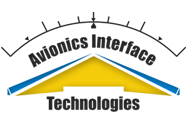Moving From Busses to Networks
As avionics systems move away from shared bus architectures towards more network based systems one of the key considerations for data acquisition applications must be the method of accessing the avionics system data. With shared data busses like MIL-STD-1553 and ARINC 629 monitoring equipment could easily access all avionics system data from a single connection to the shared bus. With switched networks there is no signle connection point with access to all data.
TAPs vs Switch Monitor Ports
For network systems two approaches can be considered. Either a dedicated "monitor" port can be used in the network switching element(s), or each individual link (between end nodes and switch) can be monitored using a device called a network tap. If a monitor port on the network switch is used, then the configuration (switching tables) of the network switch must be modified to forward selected data to the monitor port. While this method simplifies (and reduces!) wiring, it does not allow the network data to easily be captured in the same order and with the same timing as it actually occurs on the network. Because of this the use of network taps is preferred in avionics test and data acquisition applications.
Optical Network TAPs
In optical Ethernet (1000BASE-SX & 10GBASE-SR) and Fibre Channel networks passive network taps are commonly used. Passive taps do NOT require an external power source and are very simple devices which simply "split" the optical signal into two outputs (one to the destination node and one to the monitoring interface). Because no external power is required and due to simplicity, these types of passive taps are not prone to failures which can disturb the operation of the networks under test. As a result, tapping into data links in Fibre Channel and optical Ethernet systems is relatively simple.
Passive taps (or splitters) are also possible for some copper Ethernet networks. 10BASE-T (10Mbit/s) and 100BASE-T (100Mbit/s) networks can be tapped using passive devices just like optical networks. However, this is NOT the case for copper gigabit Ethernet (1000BASE-T).
Active Network TAPs
10/100BASE-T Ethernet is carried over two twisted pairs, with 10/100 Mbit/s available simultaneously in both directions (this is the reason a network tap provides two monitor port outputs - one for data in each direction). 10/100BASE-T Ethernet is commonly carried on Category 5e or Category 6 wire which provides 4 wire pairs.

The CAT 5e/6 cable that is common in legacy Ethernet networks is used to support 1 Gbit/s Ethernet by making use of all 4 pairs in these cables. And because these pairs can only reliably support a data rate of up to 250 Mbit/s, a complex method must be used to provide 1 Gbit/s in both directions (simultaneously).

In order to share a pair to transmit data in both directions at the same time, the receivers at each end of a link must process the signals. This processing involves subtracting that nodes transmitted signal out to "separate" out the signal a node is transmitting from the signal it is receiving since the link is carrying a mixed signal. Obviously, with this method of data transfer, a "splitter" type passive tap would not work because the monitoring equipment does not "know" the transmitted signal from each side and therefore does not have the input needed to separate the mixed electrical signal on each pair.
As a result, active taps which actually act as end nodes which receive and forward the Ethernet signals to the destination and monitor interfaces are required in 1000BASE-T networks. Because they are active and more complex these types of taps are more prone to failures which can disrupt the monitored networks.
For more information about avionics network data acquisition, check our our white paper "Data Acquisition in High Speed Ethernet & Fibre Channel Avionics Systems"


